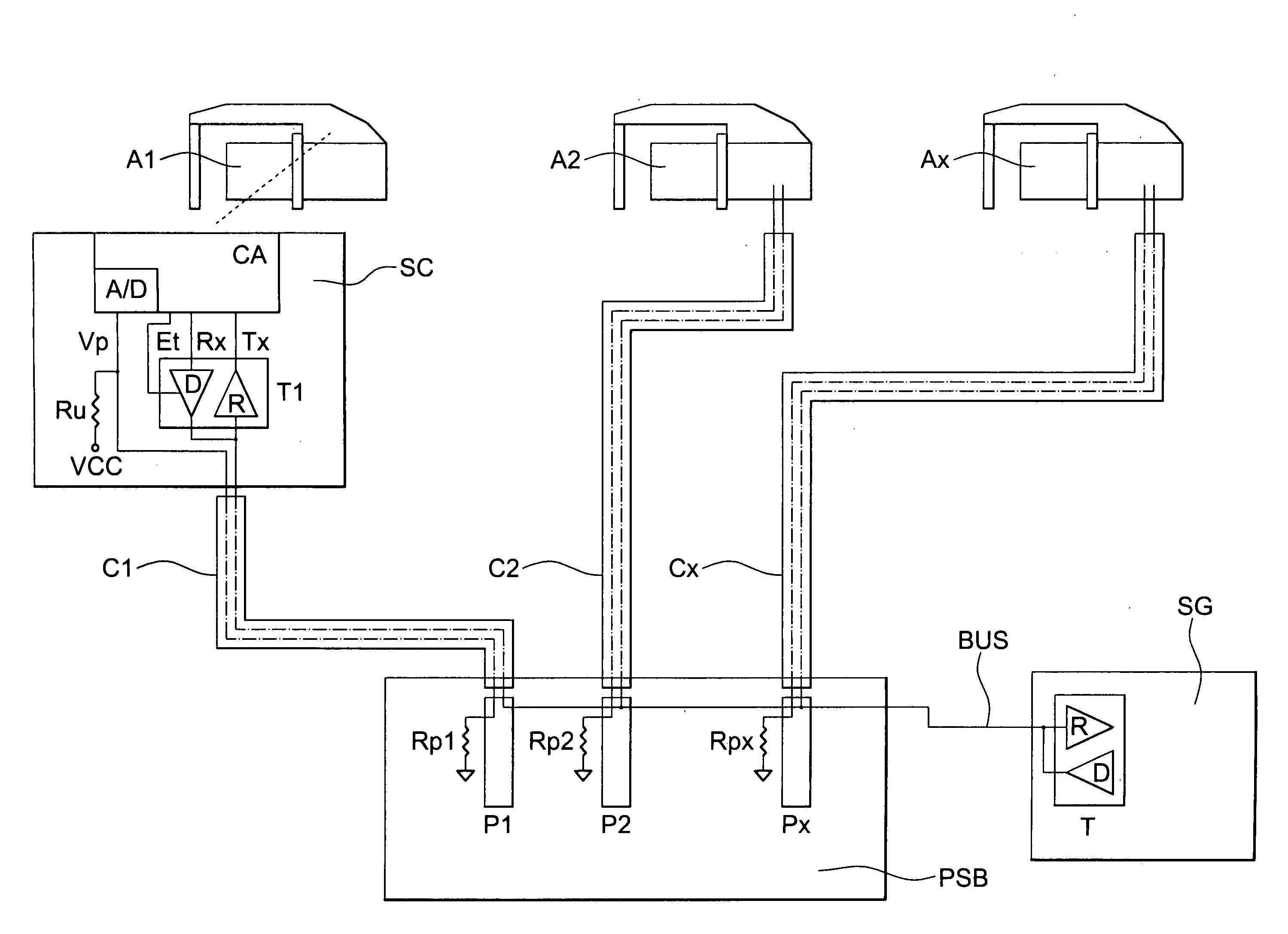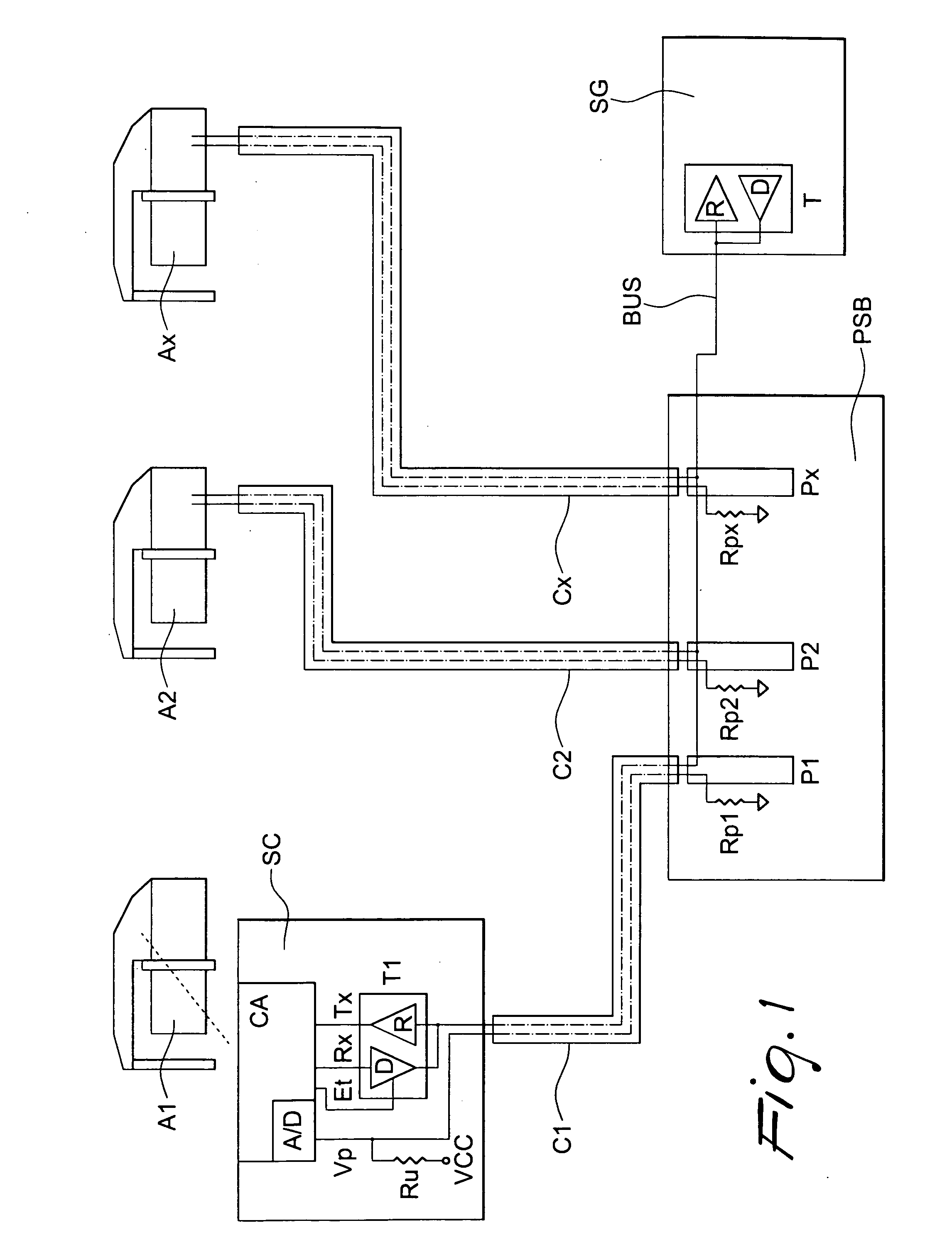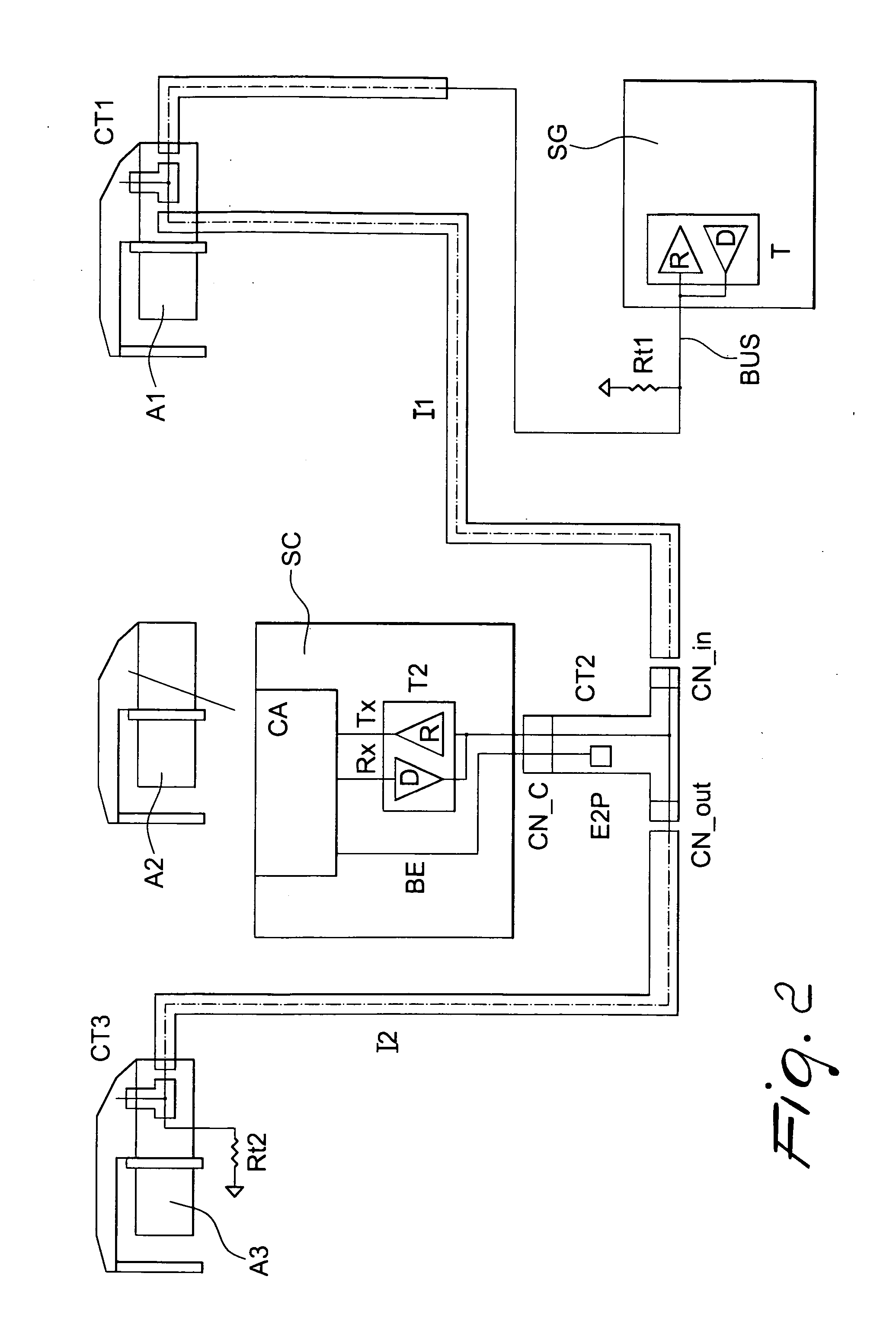Three-way connector for connecting weft feeders of textile machines to a serial bus, and a control system based thereon
a technology of serial bus and weft feeder, which is applied in the direction of weaving, looms, coupling device connections, etc., can solve the problems of affecting the operation of personnel, increasing the bulk of cable bundles, and affecting the appearance of textile machines,
- Summary
- Abstract
- Description
- Claims
- Application Information
AI Technical Summary
Benefits of technology
Problems solved by technology
Method used
Image
Examples
Embodiment Construction
[0016] With reference to FIG. 1, in a system of the prior art a plurality of weft feeders of a textile machine, such as A1, A2, Ax, are connected by respective connection cables C1, C2, Cx to a distribution box PBS and from there to a master managing unit SG for the machine, via a bidirectional serial differential bus BUS, typically RS485 or CAN Bus. Within managing unit SG, bus BUS leads to a receiver R and to a driver D. Within box PBS, the bus forks out in star-fashion to cables C1, C2, Cx, via respective connectors P1, P2, Px leading to respective electronic cards of weft feeders A1, A2, Ax; for simplicity, only a card SC for weft feeder A1 is shown. Card SC typically includes a microcontroller CA managing the so-called transceiver T1 comprising a receiver R for receiving serial digital signals from the bus and transferring them as Tx to microcontroller CA, and a driver D for receiving signals Rx from CA and transmitting them onto the bus. Usually, an enabling signal Et is also ...
PUM
 Login to View More
Login to View More Abstract
Description
Claims
Application Information
 Login to View More
Login to View More - R&D
- Intellectual Property
- Life Sciences
- Materials
- Tech Scout
- Unparalleled Data Quality
- Higher Quality Content
- 60% Fewer Hallucinations
Browse by: Latest US Patents, China's latest patents, Technical Efficacy Thesaurus, Application Domain, Technology Topic, Popular Technical Reports.
© 2025 PatSnap. All rights reserved.Legal|Privacy policy|Modern Slavery Act Transparency Statement|Sitemap|About US| Contact US: help@patsnap.com



